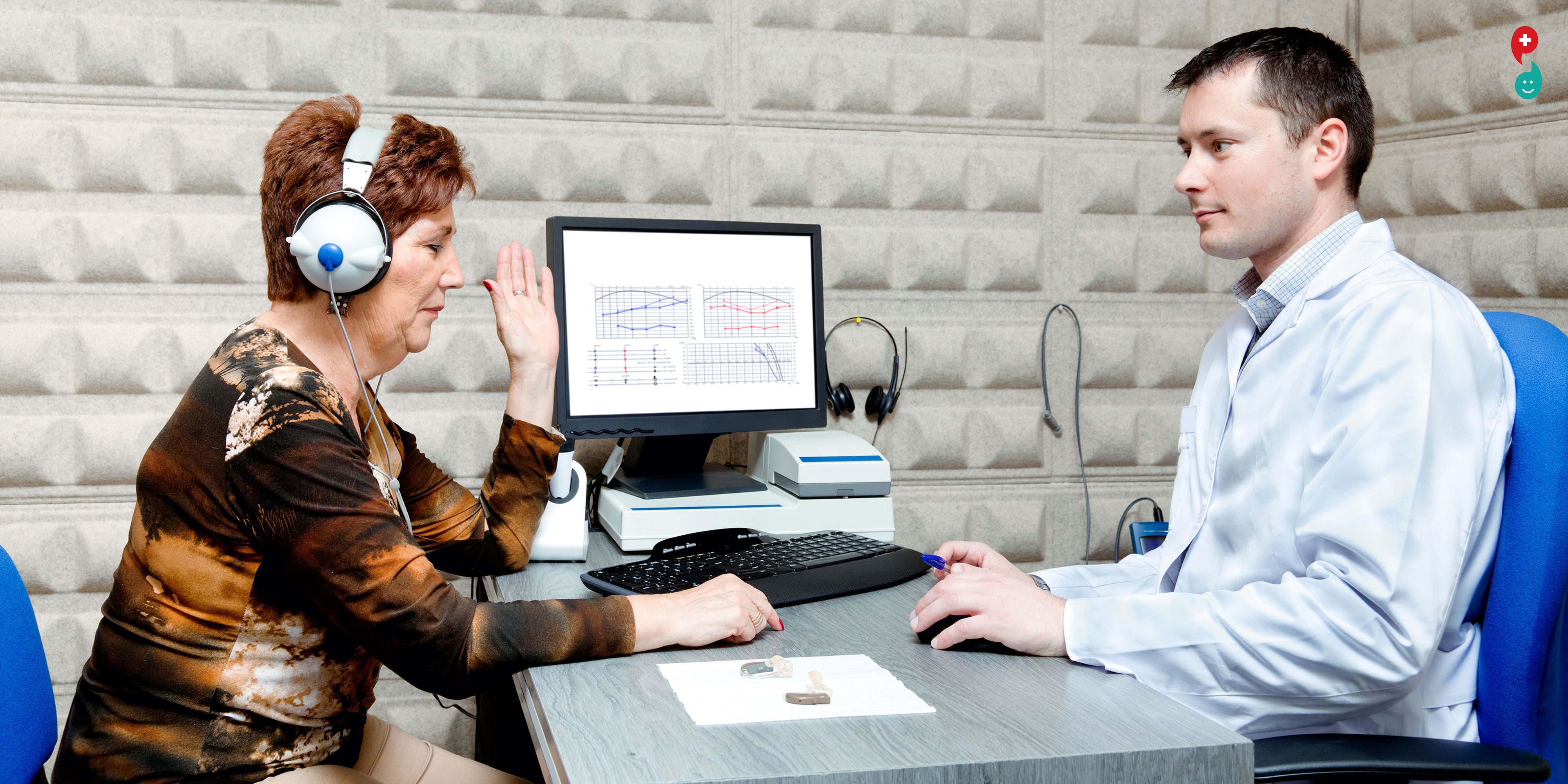
WHISPER TEST
What is whisper test?
A hearing test provides an evaluation of the sensitivity of a person's sense of hearing and is most often performed by an audiologist using an audiometer. An audiometer is used to determine a person's hearing sensitivity at different frequencies. There are other hearing tests as well, e.g., Weber test and Rinne test.
Ear examination:
Prior to the hearing test itself, the ears of the client are usually examined with an otoscope to make sure they are free of wax, that the eardrum is intact, the ears are not infected, and the middle ear is free of fluid (indicating middle ear infection). The most common reasons to develop hearing loss due to genetic disorder, ageing problems, exposure to noise pollution, infections, birth complications, trauma to the ear, and certain medications or toxins.
Pure tone audiometry
The standard and most common type of hearing test is pure tone audiometry, which measures the air and bone conduction thresholds for each ear in a set of 8 standard frequencies from 250Hz to 8000Hz. The test is conducted in a sound booth using either a pair of foam inserts or supraural headphones connected to an external audiometer. The result of the test is an audiogram diagram which plots a person's hearing sensitivity at the tested frequencies. On an audiogram an "x" plot represents the softest threshold heard at each specific frequency in the left ear, and an "o" plot represents the softest threshold heard at each specific frequency in the right ear. There is also a high frequency version of the test which tests frequencies over 8000Hz to 16000Hz which may be employed in special circumstances.
Instructions
The examiner stands at arm's length (~0.6 m) behind the patient (to prevent lip reading)
The opposite auditory canal is occluded by the patient or examiner and the tragus is rubbed in a circular motion (goal; to block hearing from that ear)
The examiner exhales and whispers a combination of numbers and letters (example 4-K-2). Whispering at the end of exhalation is to ensure as quiet and as standardized voice as possible.
If the patient responds correctly, hearing is considered normal and no further screening is necessary on that ear.
If the patient responds incorrectly, then repeat using a different number-letter combination.
If on repeated testing, the patient can answer three out of a possible six numbers-letters correctly, the patient passes. If they cannot answer three out of six or more, the patient fails in that ear.
Repeat the sequence in the opposite ear using different combinations of numbers and letters. (Note: patients with memory problems may need a simplified letter/number combination to compensate for their inability to remember)
Significance
Hearing loss prohibits patients from understanding conversations, contributes to cognitive decline, and leads to social isolation. This impairment is the third most chronic impairment among older people. It is also useful to ask the patient and family if they
have noticed any changes in hearing, to describe any changes and if they have had any prior treatment.
Patients with no wax occlusion of their ear canal and who failed this test have a hearing loss that correlates with 30 dB loss. This level of hearing loss has a significant affect on communication.







